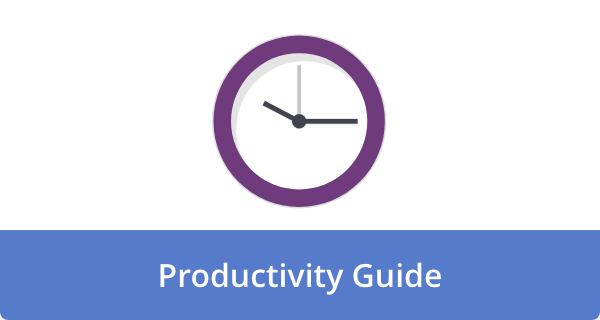
Taking the time to think strategically can be challenging in today’s fast-paced world. Time demands are constant, and taking a long-term view can be difficult.
Many surveys back this up, with one revealing that 96% of leaders surveyed did not have enough time for strategic thinking. Additionally, Jane Sparrow conducted a LinkedIn poll of her own, in which over half of those who took part reported having no time or finding it difficult to find.
For success, however, strategic thinking is essential. After all, it consists of clearly defining your goals, developing a plan for achieving them, and making decisions that will advance you toward them.
In short, in order to be successful, you must think strategically. To help you get started, here are a few tips.
The Benefits of Finding the Time to Think Strategically
Spending time thinking strategically offers many benefits. Thinking strategically makes you more likely to make good choices that will help you reach your goals. By taking the time to think and plan, you’ll also protect your valuable time and boost your productivity.
You can improve your strategic thinking skills by spending time each week or month considering how you will achieve your goals. This planning session with yourself will result. As a result, you can form better decisions that will help you achieve your goals by thinking strategically.
How to Make Time for Strategic Thinking
Block out dedicated time for strategic thinking.
It is essential to schedule strategic thinking the same way you plan any other important task. Therefore, don’t squeeze it in between other tasks. Instead, schedule time for strategic planning each week in your calendar. You might do this each morning before you begin working, or you could devote a few hours to it on a Sunday afternoon.
Additionally, according to Harvard Business School Online, you should do the following during these blocks:
- You should ask strategic questions. A strategic question can describe a challenge, opportunity, or ambiguity you face at the moment, whether personal or professional, according to the Harvard Business School Online course Disruptive Strategy. An example would be launching a new business or product, beating a competitor, or structuring your organization to encourage innovation.
- Make observations and reflect on them. A strategic question must be answered and addressed skillfully. Observing and reflecting on your current situation is the most effective way to accomplish this.
- Don’t be afraid to consider opposing views. When you have determined the best strategy for your organization, question your assumptions and test your hypothesis rigorously. As a result, you won’t overlook another possibility.
- Take advantage of formal training. You can improve your strategic thinking skills by practicing the methods described above. There are, however, other ways to learn. For example, discover how to make innovation a reality for your organization by enrolling in Disruptive Strategy.
In addition to the tips above, here are a few other things you can do.
- Join a mastermind group or find a mentor to help you think strategically.
- Become familiar with strategic thinking by reading books and articles.
- Attend a workshop or class on strategic planning.
- Ensure that you think strategically every day. As you practice, you will become better at it.
Set aside a quiet space.
Having the ability to focus is crucial when thinking strategically. It is best to find a quiet place away from distractions. Any home office, library, or park bench would do.
The following points can be helpful when setting up a quiet space.
- Choose a location that is free from noise and distractions. You can use your bedroom, an extra room, a closet, or even a corner of your living room. Use a door or curtain to separate your quiet space from the rest of your house if you live in a noisy household or office.
- Make the space comfortable. Place pillows, blankets, beanbag chairs, or other comfortable furniture in the room. Ergonomic furniture also wouldn’t hurt. The space may also be made more inviting by adding plants or other decorations.
- Block out noise. Use noise-canceling headphones, earplugs, or a white noise machine if noise still comes into your quiet space.
- Establish some ground rules. Ensure that everyone in your household or at work respects your need for peace and quiet in this space. For example, you may ask them not to disturb you unless an emergency arises.
- Use your quiet space for activities that require concentration or relaxation. You may want to read, write, meditate, or nap while doing this. Your quiet space is also a great place to relax during breaks or after a long work day.
- Get away from distractions. Disconnect from your phone, email, and anything else that might distract you.
In addition, here are a few tips:
- Pick a time of day when the house or office is generally quiet.
- You should let others know when you are using your quiet space and ask that they respect your privacy while you are doing so.
- Make sure your quiet space is not accessible to pets.
- You should take some time to declutter your quiet space to be free of distractions and clutter.
- Use candles, essential oils, or nature sounds to create a calming atmosphere in your quiet space.
- Your quiet space should be well-ventilated and comfortable.
Consider keeping a strategic journal.
Strategic journals are great tools for tracking your progress toward your goals, reflecting on your experiences, and identifying areas for improvement.
The following are some tips for keeping a strategic journal:
- Be specific about your goals. Put down specific goals you can track rather than just writing, “I’d like to be successful.” For example, you might write, “In the next quarter, I want to increase my sales by 10%.”
- Set deadlines for your goals. You will stay motivated and on track if you have deadlines.
- Find a format that works for you. Strategic journals can be kept any way you like. Traditional notebooks are preferred by some people, while digital journals are preferred by others. Decide on a format that you’re comfortable with, and that will be easy for you to use.
- Be consistent. Consistency is key to the success of a strategic journal. Commit to writing in your journal regularly, Whether just a few minutes a day.
- Maintain a regular tracking system. Keep an eye on your goals and progress regularly. Keeping focused and making adjustments as necessary will help you stay on track.
- Be honest with yourself. Your journal should contain honest reflections of your successes and failures. In the future, you can make better decisions based on your experiences.
Give yourself a break.
You may think increasing your work hours will help you accomplish your goals. However, economist John Pencavel found that a person’s hourly productivity declines dramatically after 50 work hours a week. Since productivity drops so drastically, there is no point in putting in more hours after 55 hours.
The reason is that you can come up with great strategic ideas when you are able to let your mind wander. As such, you must step away from work and relax.
You may find inspiration in Lin Manuel Miranda’s award-winning play Hamilton, which he conceived while on vacation in Mexico.
Participate in strategic thinking as a team.
Scheduling strategy sessions with peers, executives, and other departments is a must. As well as providing a sounding board and sanity check for your own hypotheses will broaden your perspective and give you a broader range of ideas and perspectives. Since they contributed to the process, those who contributed will feel ownership when the final product is ready.
Most importantly? The initial reaction won’t be negative because they won’t be caught off guard.
“If you’re really ambitious, add a representative customer and industry expert. Bringing in external perspectives is the best way to ensure you’re not stuck in an echo chamber and that this critical planning process doesn’t become just another thing to do among your senior executives,” says Robin Camarote of Wheelhouse Group. “Most people tend to be on their best, most professional behavior when there is an outsider in the room — so facilitating the conversation becomes easier, as well.”
Nevertheless, don’t try and get everyone in the room at the same time. The meetings should be held with smaller groups so everyone can contribute, in order to be efficient and productive. Otherwise, you’ll spend time herding cats and keeping people focused.
Participate in meaning-making activities.
Developing strategic thinking skills requires:
- Exposure to critical roles.
- Synthesizing broad information
- Fostering curiosity
- Gaining experiences that enable you to identify patterns and connect the dots.
This is why leadership development programs often include rotating jobs, cross-functional projects, and face time with senior leaders.
Taking a 30-foot perspective can help you better understand the issues that come up repeatedly throughout the organization. As you do, you might want to ask questions like:
- What is the reason they have not been solved yet?
- Which approach has been dominant?
- How could we approach this differently?
Review and revise your plan regularly.
Your plan may need to be adjusted as your circumstances change.
The ability to think strategically takes time and practice. However, it is an essential skill for success in any field. These tips can help you make better decisions for your future by giving you the time to think strategically.
You can also find time to think strategically by following these tips:
- Delegate tasks. Do not be afraid to delegate tasks if you are overwhelmed. By doing this, you will have more time for strategic thinking.
- Say no to requests. When requests are taking up your time and preventing you from being strategic, it’s okay to decline them.
- Get organized. Keep your thoughts and ideas organized with a system.
- Be patient. The process of strategic thinking takes time. Don’t expect to accomplish it in a day or two.
Conclusion
It takes time and practice to develop strategic thinking skills. It is, however, a skill that is worth learning. The more you think strategically, the better your decision-making skills, the more time you can save, and the more likely you are to accomplish your goals.
FAQs
How much time do I need to set aside for strategic thinking?
Your role, responsibilities, and the complexity of your issues will determine how much time you must devote to strategic thinking. In general, however, spending at least 30 minutes every week on strategic thinking is a good idea. It may seem like a lot, but if you want to succeed in the long run, you must make time for it.
What are some good times to do strategic thinking?
There are no hard and fast rules regarding when to do strategic thinking. Nevertheless, some good times to do so include:
- When your mind is fresh in the morning.
- Reflecting at the end of the day on your accomplishments.
- At lunch or during breaks, when you can relax.
- When you have more time to focus, such as on weekends or vacations.
How can I make sure I use my strategic thinking time?
To make sure you are actually using your strategic thinking time, follow these tips:
- Each session should have a clear goal. By the end of the time, what do you hope to accomplish?
- Turn off distractions. Ensure your phone is put away, your email is closed, and you are working in a quiet place.
- Be disciplined. Don’t let other tasks distract you from your strategic thinking time.
- Take notes. As a result, you can recall your thoughts and ideas more easily.
- Review your notes regularly. You can track your progress and ensure that you are on track by doing this.
What are some common barriers to strategic thinking?
Strategic thinking is hindered by many barriers, including:
- Insufficient time.
- There is a lack of focus.
- Various distractions.
- Fear of failure.
- Perfectionism.
- The inability to change.
How can I overcome these barriers?
To overcome the barriers to strategic thinking, follow these tips:
-
- Make time for strategic thinking. To do this, you must block out time in your schedule and protect it from distractions.
- Set clear goals for each strategic thinking session. Maintaining focus and staying on track will make it easier for you to succeed.
- Find a quiet place to work where you will not be interrupted.
- Be patient and persistent. A strategic approach requires effort and time.
- Don’t be afraid to fail. We all make mistakes. However, in order to move forward, we must learn from our mistakes and move on.
- Be open to new ideas and perspectives. You should not be afraid to challenge the status quo.
Image Credit: Sora Shimazaki; Pexels; Thank you!









John Hall
John Hall is the co-founder of Calendar a scheduling and time management app. He’s also a keynote speaker that you can book at http://www.johnhallspeaking.com.
Reposted by KVCore
Article Link: https://www.calendar.com/blog/finding-the-time-to-think-strategically/